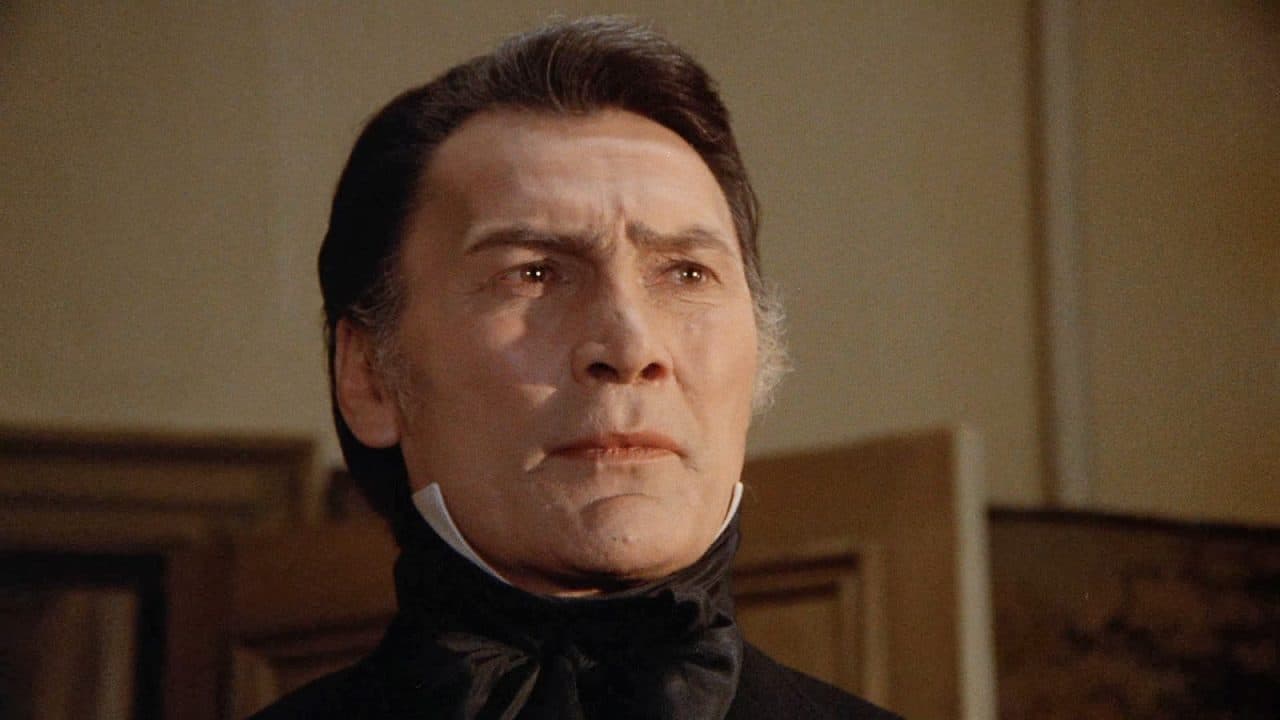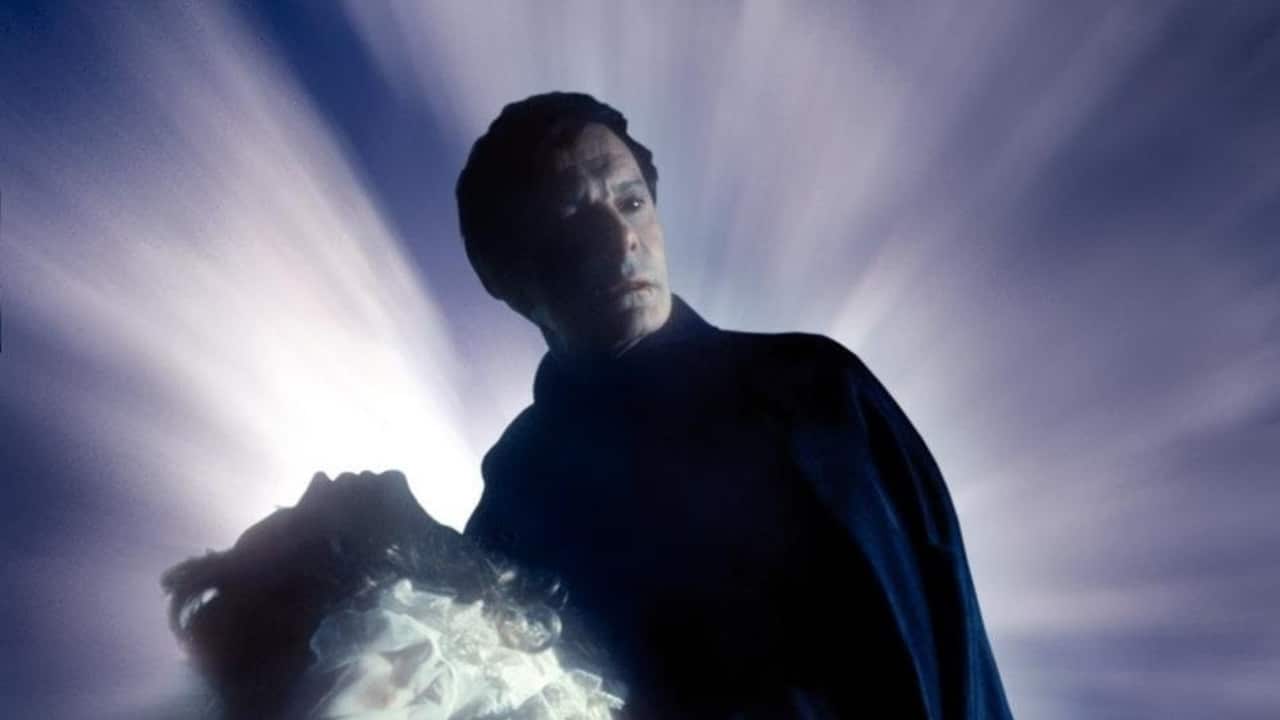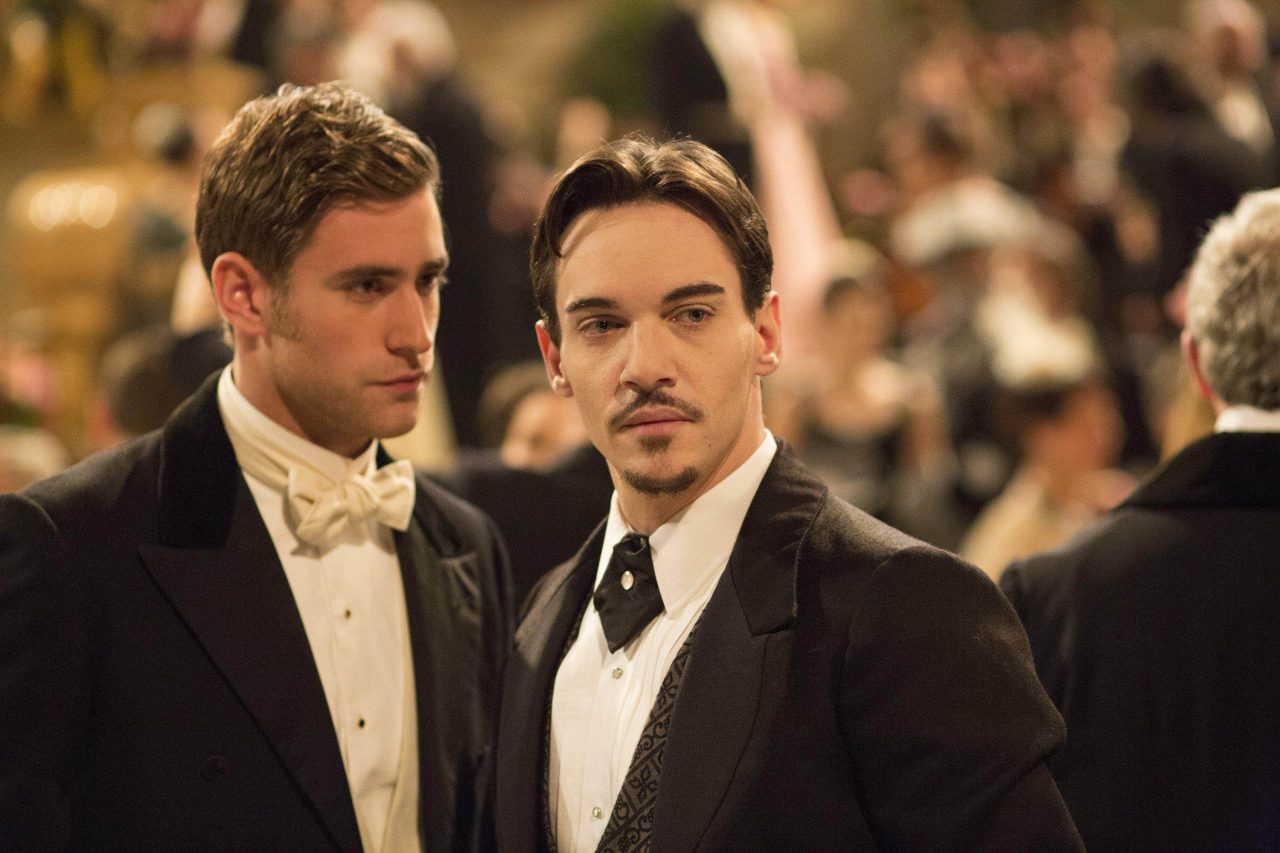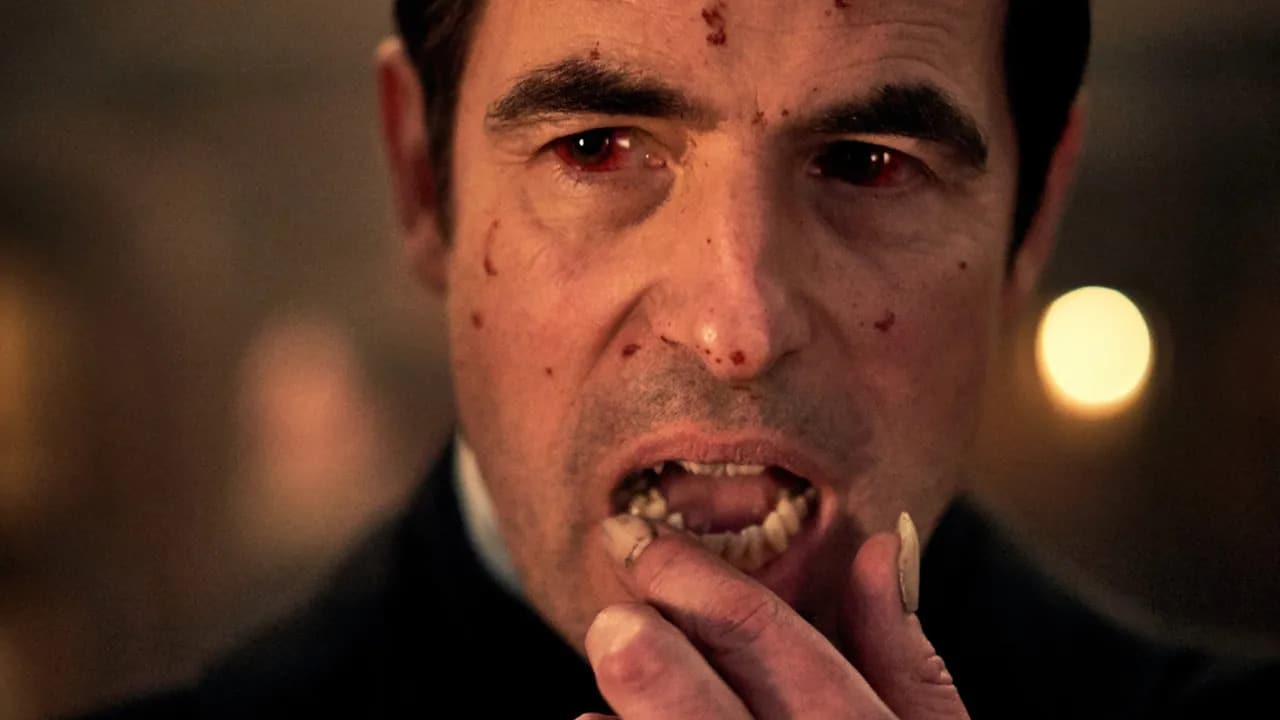There are certainly innumerable big screen adaptations of Bram Stoker’s famous count. However these retro television movies and contemporary series each take Drac for a unique spin.
Dan Curtis’ Dracula

The eponymous Dark Shadows creator helmed this 1974 CBS television movie originally billed as Bram Stoker’s Dracula, and the historical Vlad Tepes connections and reincarnated romance bookends later found in Francis Ford Coppola’s 1992 adaptation seem to have their impetus here amid naive solicitors, wolf howls, a creepy Borgo Pass, and monstrous vampire brides. The seventies zooms are a bit much, but ominous epistles and past portraits build suspense before Demeter action. Although the idyllic English coast and Victorian trains reset the Carpathian atmosphere; wolves run amok in the parlor while Lucy Westerna’s sleepwalking leads to Doctor Van Helsing’s, garlic, blood transfusions, and vampire stakings. Carriages accent the 1897 village, outdoor filming, and European locations. However, the Civil War-era hoop gowns aren’t the turn of the nineteenth century bustles the fainting, tea time ladies should probably be wearing.
Forget the velcome cliches, for Jack Palance’s (City Slickers) deep voice, chilling delivery, and robust presence elevate the familiar literary lines. Despite a suave facade and lost love motivations, his hissing actions and rough despair remain unsympathetic as the Whitby crosses and Carfax boxes of earth escalate to Transylvania investigations and pursuits. Of course, this won’t be scary for today’s viewers. The Dark Shadows music and production similarities are apparent, and this somewhat sequestered version may now seem derivative of other Dracula films that came in its wake. Thankfully, excised book events and absent characters such as Renfield mean this straightforward Stoker summation written by Richard Matheson (I Am Legend) moves fast with Victorian vogue, eerie atmosphere, and fine performances making for a sleek introduction to the literary source.
Count Dracula

Noticeable changes including Lucy and Mina Westerna as sisters, a combination character named Quincy P. Holmwood, and later Edwardian stylings pepper this 1977 BBC/PBS adaptation starring Louis Jourdan (Gigi). Dictaphones and more dialogue from the novel anchor the longer Transylvania imprisonment, dark castle, spooky stonework, and creepy coaches. The music is surprisingly minimal and the Demeter is a mere mention, and the play-like presentation may seem slow or the television filming of the time lacking. However the time taken allows the story to take center stage amid the cemeteries and coffins. Reverse coloring, red distortions, and negative visual effects can also be jarring – a psychedelic try hard cheapness that’s both odd yet strangely effective. Our vampire brides are fully clothed, and Jordan’s posh accent and echoing hypnotic sounds may seem strange despite his suave delivery. Fortunately, the fangs, freaky nails, and hairy palms suggest the sinister on the page Vlad, and we do see Dracula walking down his castle wall. Bloody trickles around the mouth and slightly hokey stakings with plenty of splatter escalate with horse chases and action confrontations in the final half hour – keeping up the brooding atmosphere despite the small scale design. Although tame now and running long at two and a half hours, the overall faithfulness with scenes not often adapted onscreen make this an interesting viewing for Stoker enthusiasts and Dracula newcomers.
Dracula (2013)

Jonathan Rhys Meyers’ Dracula is a Tesla-esque inventor seeking a vampire cure in this 2013 NBC limited series. Early on, the weekly carrots and medieval flashbacks are uneven with slow introductions, unnecessary CGI sword fights, fantastic industrialism, and secret organizations detracting from more interesting psychic battles, eerie visions, occult antagonists, and love triangles. Numerous writers with time wasting tangents and directors with no clear vision compound the forty-three minute episode network trappings. Fortunately, tormented villains and character conflicts lead to daylight serums, sexy dreams, and well done horror irony as up close cinematic filming, primal distortions, and askew angles accent the dark laboratories and predatory violence. Cliffhangers, subterfuge, and blackmail provide entanglements amid tempting heartbeats and sensuality. Intriguing devil or angel morality, abductions, and historical revelations come together with gruesome threats and changing allegiances.
Meyers (The Tudors) is calculating and slick as both the warrior Vlad and the Victorian entrepreneur with animalistic nuances and desperate romantic motivations. Vampire hunter Victoria Smurfit (Ballykissangel) provides chemistry and confidence to match Dracula’s game, however Nonso Anozie (Game of Thrones) as an ingenious, urbane Renfield and Katie McGrath (Merlin) as a lady leaning Lucy Westerna are underutilized. Female medical students and early muckraker newspaper happenings are clunky with a miscast, superfluous ensemble, and some of the period frocks and feathers are too modern. Thankfully, the old time medical gear, carriages, and top hats provide steampunk mood along with blood, graves, shadows, and skeletons. Though not a faithful Stoker retelling; progressive characters, fun performances, and unique plots make for what could have been gothic atmosphere and sophisticated storytelling.
Dracula (2020)

Count Claes Bang (The Square) terrorizes Dolly Wells (Inside Man) as unorthodox nun Agatha Van Helsing for this BBC/Netlfix 2020 co-production. Convent sensationalism with over-edited, trying to be clever zooms, and CGI panoramas intrude on the gothic torches, creaking doors, and castle staircases while voiceover minutia undercuts the Carpathian prayers, howling wolves, sinister tension, and Carfax Abbey paperwork. Redundant special effects are obvious and for the audience. Armed nuns lead to dead deckhands on the Demeter as Dracula and our female Van Helsing fall prey to typical attractions amid repetitive freeze frames and disjointed flashbacks. Key action pieces that should be in real time are withheld for later contrivance, disrupting the turbulent isolation and maritime murder mystery. After the first two episodes drag out brief book moments with new gimmicks, the series restarts with contemporary cemeteries and supernatural technology moving at lightning speed. Problematic scientific organizations and ill characters drinking the vampire samples stall in glittery montages with no paranormal follow through to the science meets occult.
Bang’s gravitas deserved more than mustache twisting jolly good retorts replacing any menace as swiping left jokes, existential wordiness, and hemoglobin fantastics pile on in the final twenty minutes. Hidden laboratories and furry wolf transformations are better than the jarring strobe cameras and neon text message bubbles but writer and producer Mark Gatiss (Sherlock) as Dracula’s lawyer Renfield Skypes with the Count in awkward self-insertions calling attention to the exposition. Six forty-five minute episodes could have organized the literary references, contemporary material, and time jumps. Unfortunately, these three uneven ninety minute episodes go back and forth in mixing style over substance – resulting in a messy narrative with time-wasting finite, commonplace gore, and nonsensical absurdities.
Sink your teeth into your preferred small screen Dracula!
Don’t forget to follow us on Twitter or Instagram or like us on Facebook.
Kristin Battestella writes articles, editorials, and reviews for several websites, magazines, and print publications including I Think, Therefore I Review and Search Magazine. Previously a traditionally published author of speculative fiction and the Fate and Fangs vampire novels, Kristin’s DIY Halloween how-tos and Kbatz Krafts articles have been featured at http://HorrorAddicts.net and in two Horror Addicts Guide to Life anthologies. In addition to sewing and @KbatzReviews Youtube vlogs; Kristin can be heard on the Women InSession podcast at http://InSessionFilm.com alongside her written classic film discourse. Kristin is also active in the local author community, having chaired writing events and conferences with the South Jersey Women Authors.
Discover more from
Subscribe to get the latest posts sent to your email.
